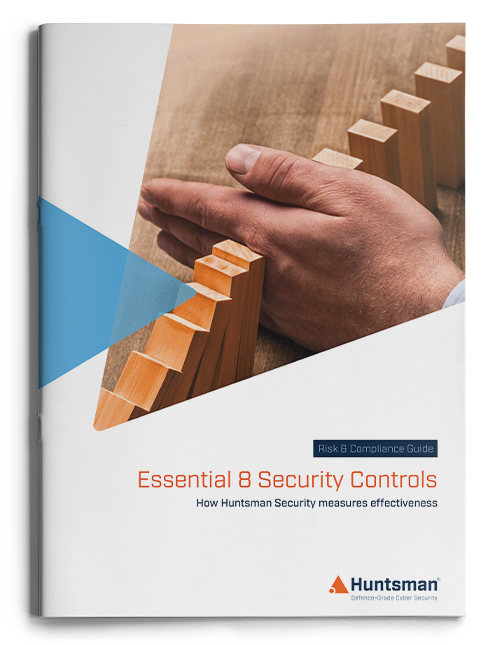When Scouts founder, Robert Baden-Powell, announced the organisation’s motto, “Be Prepared” in 1907, a member of the audience shouted, “Prepared for what?” Baden-Powell’s reply was simple. “Why, for any old thing,” he said.
In cyber security, this sentiment underlies everything we do to defend ourselves from hackers and criminals, since we know our adversaries are relentless. Cyber crime is now the number one threat businesses face and it’s not going away any time soon. But the question many executives are asking is, what does preparedness look like and how does it apply to their business? Let’s explore this and see what advice is out there to show organisations how to “Be Prepared”.
Cyber security in the news
Over the past few weeks, several high-profile attacks affecting Australian businesses have caused disruption and concern. Australian logistics company, Toll, lost many of its operational systems to a ransomware attack at the end of January, having to resort to manual processes to continue its delivery services. The Australian wool industry was also badly affected by a recent attack, also caused by ransomware. They were forced to shut down auctions across Australia as their production databases were rendered inaccessible.
In an interview by the Australian Financial Review on 3rd March, the head of the Australian Signals Directorate Rachel Noble, warned “that business and government organisations must make data security a top priority, and develop a deeper understanding of cyber threats and defences.” She emphasises the rising threat of cybercrime affecting Australian organisations, a message that was further reinforced with the release the Office of the Australian Information Commissioner’s report on Friday concerning data breaches over the 6 months July – December 2019.
How can businesses defend themselves?
Cyber security can be a confusing discussion for boards and when they pose questions of what they can do to protect themselves, oftentimes the responses are deeply technical and meaningless in terms of directly answering the questions.

In the wake of ASD scrapping their cloud certification programme, they have said they will now focus on supporting the Infosec Register Assessors Programme (IRAP) to help assure any government hosting system upholds security to the right level. Assurance is the key word here, since every business is different and there are no full proof ways to implement security, rather organisations should choose an approach that layers in defences to block most attacks and prepares them to detect and respond to attacks that make it through those defences.
The Australian Cyber Security Centre’s (ACSC) Essential Eight is the best place to start for ANY organisation seeking to improve its security posture. By implementing just eight critical security controls in your business, all of which are understandable for non-technical people, you can reach a level of defensive security that keeps out 85% of targeted attacks. The Essential Eight includes routine things like ensuring backups work and can be restored, and that you use two-factor authentication for accessing business systems, both of which are commonplace. Many businesses however don’t implement these controls because the security benefits are not clearly articulated in business terms.
Starting a cyber security programme can seem daunting since it often appears that there is no end in sight to the level of commitment and investment the board must provide. For this reason, many organisations leave it too late, only starting their security programmes after they have been hacked.
Creating a roadmap to implementing the Essential Eight is recommended, there are ways to make the journey digestible to the business and incremental in terms of investments required to get the controls institutionalised across the enterprise.
How to achieve cyber maturity over time
The Essential Eight comes with plenty of help for organisations looking to implement it. However, one of the most useful guidelines outside of the technical implementation guides, is the Essential Eight Maturity Model.
The ACSC recognises that not every organisation can perfectly implement all these controls in one project, so to help organisations measure the efficacy of control implementation, they devised a three-level maturity model defined as follows:
- Level One: Partly aligned with the intent of the control
- Level Two: Mostly aligned with the intent of the control
- Level Three: Fully aligned with the intent of the control
ACSC says that as a target, organisations should aim to reach Maturity Level Three for each control, but even getting some of those controls to level 1 will counter some attacks. Over time, the security team can focus on improving each control’s implementation thus continually improving the organisation’s security posture.
Furthermore, reporting on the state of the organisation’s security is better aligned to board communications, since it’s an easy discussion to say the goal for application whitelisting (one of the eight controls) is to reach level 2 by the end of the year.
The importance of incident response
There is one business process not included in ACSC’s Essential Eight that must be included in any security programme, otherwise your business resilience to a cyber attack remains low: incident response.
Considering a cyber incident as an inevitable situation you will find your business facing in the future, developing a response plan to deal with it is smart (and much less stressful than wondering what comes next when you are under pressure). A well-executed response helps minimise the harm caused by a cyber attack, and helps recover the business back to normal operations, ensuring your reputation remains intact.
The UK’s National Cyber Security Centre (NCSC) has guidelines appropriate to all organisations the world over on how to plan your cyber incident response processes.
Be prepared
By taking a straightforward, manageable approach to security preparedness, and combining the Essential Eight, the maturity model with an incident management plan, your organisation can rapidly improve its security posture and build a continual improvement plan that strives to reach higher levels of maturity as time goes on. Senior management will have the benefit of being able to see the value of their investment and reporting will be easy to understand, while at the same time your security team will have specific and measurable goals to aim for.
 About Huntsman
About Huntsman



